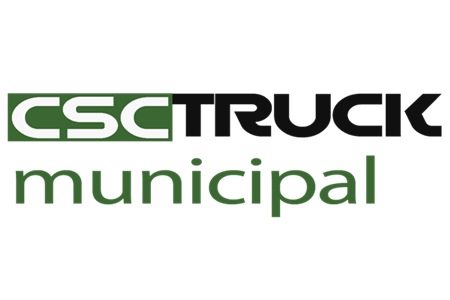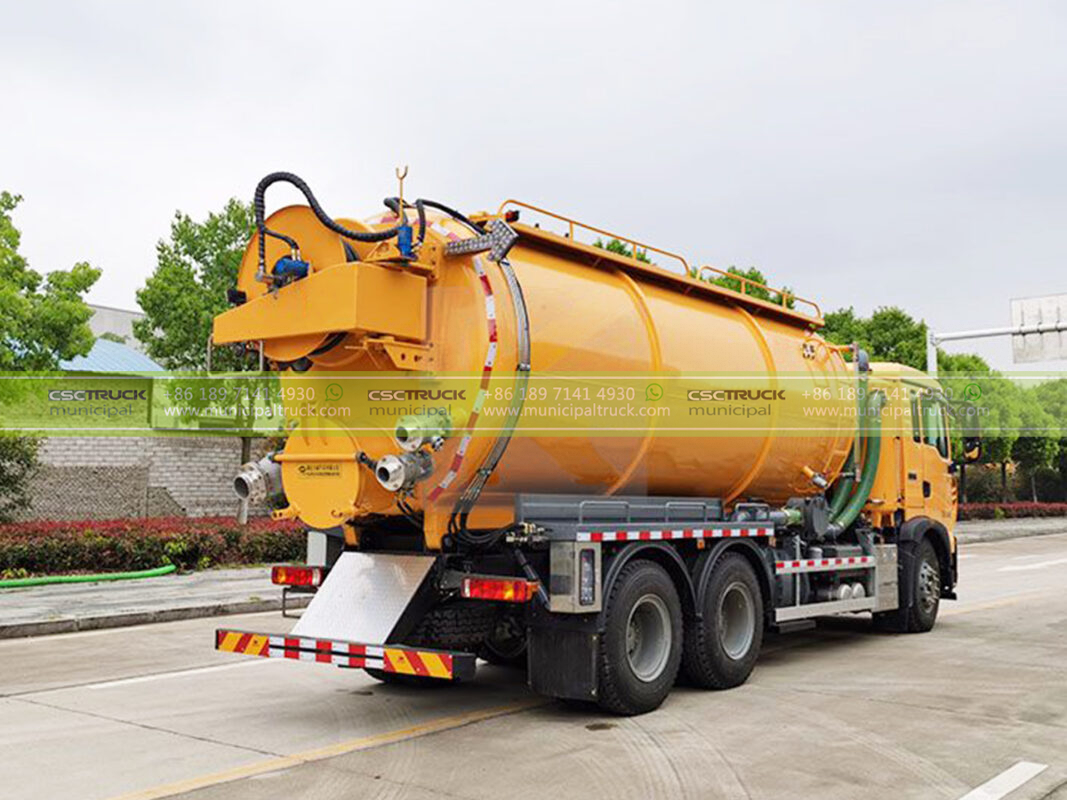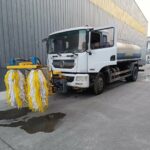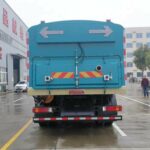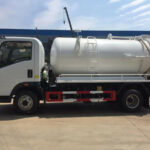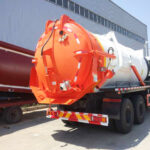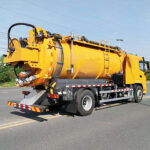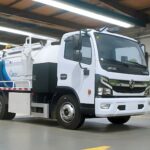1. Core Design and Operational Mechanics of a Sewer Cleaner Truck
A sewer cleaner truck is a highly specialized vehicle engineered to maintain, repair, and rehabilitate underground wastewater systems. Combining hydraulic power, vacuum technology, and precision tools, these trucks are designed to tackle blockages, sediment buildup, and structural defects in pipelines. At its heart lies a multi-functional system that integrates high-pressure water jets, vacuum suction, and debris storage, enabling operators to address complex sewer challenges in a single workflow.
The chassis is typically reinforced to support heavy-duty components, including a water tank (1,500–4,000-gallon capacity), a debris collection chamber, and a powerful pump system. Advanced models, such as those built on commercial platforms like the sewer vacuum truck, feature dual-function tanks that separate liquids from solids, streamlining disposal processes. In cities like Tokyo and Berlin, sewer cleaner trucks have reduced pipeline maintenance downtime by 70%, underscoring their critical role in urban infrastructure.
2. Primary Functions: From Blockage Removal to Preventive Maintenance
2.1 High-Pressure Water Jetting
The most recognizable function of a sewer cleaner truck is its high-pressure water jetting system, which generates forces exceeding 3,000 psi to blast away obstructions like grease, tree roots, and mineral deposits. Rotary nozzles can be adjusted to target specific pipe diameters or materials, minimizing damage to aging concrete or PVC lines. In Los Angeles, this technology cleared a 12-ton fatberg from a century-old sewer main in under six hours—a task that would have taken manual crews weeks.
2.2 Vacuum Debris Extraction
Linked to the jetting process is the sewer vacuum truck’s suction capability. Once debris is dislodged, a high-volume vacuum system transfers the waste into onboard storage tanks. This closed-loop operation prevents contaminants from escaping into the environment, a critical feature when handling toxic sludge or medical waste. Singapore’s Public Utilities Board credits vacuum extraction for achieving 99% efficiency in post-storm sewer recovery.
2.3 Pipeline Inspection and Mapping
Modern sewer cleaner trucks are often equipped with CCTV cameras and sonar sensors mounted on robotic crawlers. These tools provide real-time video feeds to operators, identifying cracks, misalignments, or invasive root systems. Data collected is geotagged, creating digital maps for predictive maintenance. A 2024 study in Toronto revealed that integrating inspection tools cut emergency repair costs by 45%.
3. Critical Applications in Urban and Industrial Settings
3.1 Municipal Sewer System Maintenance
Cities rely on sewer cleaner trucks for routine flushing of storm drains and sanitary lines to prevent overflows. During monsoon seasons in Mumbai, these trucks operate 24/7 to mitigate flooding risks, processing up to 10,000 gallons of silt per day. Their ability to handle both organic and inorganic waste makes them indispensable for maintaining public health standards.
3.2 Industrial Waste Management
Factories and chemical plants produce effluent laden with heavy metals or corrosive substances. Specially configured sewage trucks with acid-resistant tanks and HEPA filtration systems are deployed here. For example, a German petrochemical plant uses modified sewer cleaner trucks to extract and neutralize sulfuric acid buildup in onsite treatment pipelines.
3.3 Emergency Response and Disaster Recovery
When hurricanes or earthquakes compromise sewer networks, these trucks perform rapid decontamination. After Hurricane Laura in 2024, crews in Louisiana used sewer cleaner trucks to evacuate 500 tons of floodborne debris from critical pipelines within 72 hours, restoring service to 90% of affected areas.
4. Operational Best Practices for Efficiency and Safety
4.1 Operator Training and Certification
Mastering the truck’s dual jetting-vacuum systems requires rigorous training. In the EU, operators must complete 120-hour courses covering hydraulic mechanics, confined-space safety, and hazardous material protocols. Seoul’s municipal training center reports a 60% drop in workplace incidents since mandating such programs.
4.2 Route Optimization and Resource Management
Pre-planning jetting routes based on pipe age and historical blockage data maximizes productivity. Cities like Copenhagen use AI algorithms to predict sediment accumulation rates, scheduling cleanings before crises arise. This proactive approach has reduced emergency callouts by 35%.
4.3 Environmental Compliance
Proper disposal of extracted waste is legally mandated. Trucks equipped with liquid-solid separators allow operators to recycle water for future jetting cycles, while solids are transported to licensed facilities. California’s Orange County saves 1.2 million gallons of water monthly through such closed-loop systems.
5. Technological Integration: The Rise of Smart Sewer Systems
The next generation of sewer cleaner trucks is embracing IoT and automation:
- Remote Diagnostics: Sensors monitor pump pressure, tank levels, and engine health, alerting crews to malfunctions before breakdowns occur.
- Autonomous Nozzles: AI-guided jetting heads adapt their rotation speed and pressure based on real-time pipe condition data, reducing human error.
- Integration with Municipal Databases: Trucks in Amsterdam sync inspection findings with citywide asset management platforms, prioritizing repairs based on risk scores.
These innovations are blurring the line between traditional sewage trucks and smart infrastructure, enabling cities to transition from reactive to predictive maintenance models.
6. Future Trends: Sustainability and Hybrid Solutions
As municipalities prioritize decarbonization, manufacturers are reimagining sewer cleaner trucks:
- Electric and Hydrogen-Powered Models: Cities like Oslo now operate zero-emission trucks with 8-hour battery life, sufficient for daily urban routes.
- Bio-Based Jetting Fluids: Researchers are testing plant-derived solvents that break down grease without harming aquatic ecosystems.
- Modular Design: Swappable modules allow a single chassis to function as a sewer vacuum truck, sludge transporter, or inspection unit, reducing fleet size.
In 2024, New York City piloted a hybrid truck that uses solar panels to power onboard systems during daylight operations, cutting diesel consumption by 40%. Such advancements ensure these vehicles remain pivotal in achieving global water quality and climate goals.
